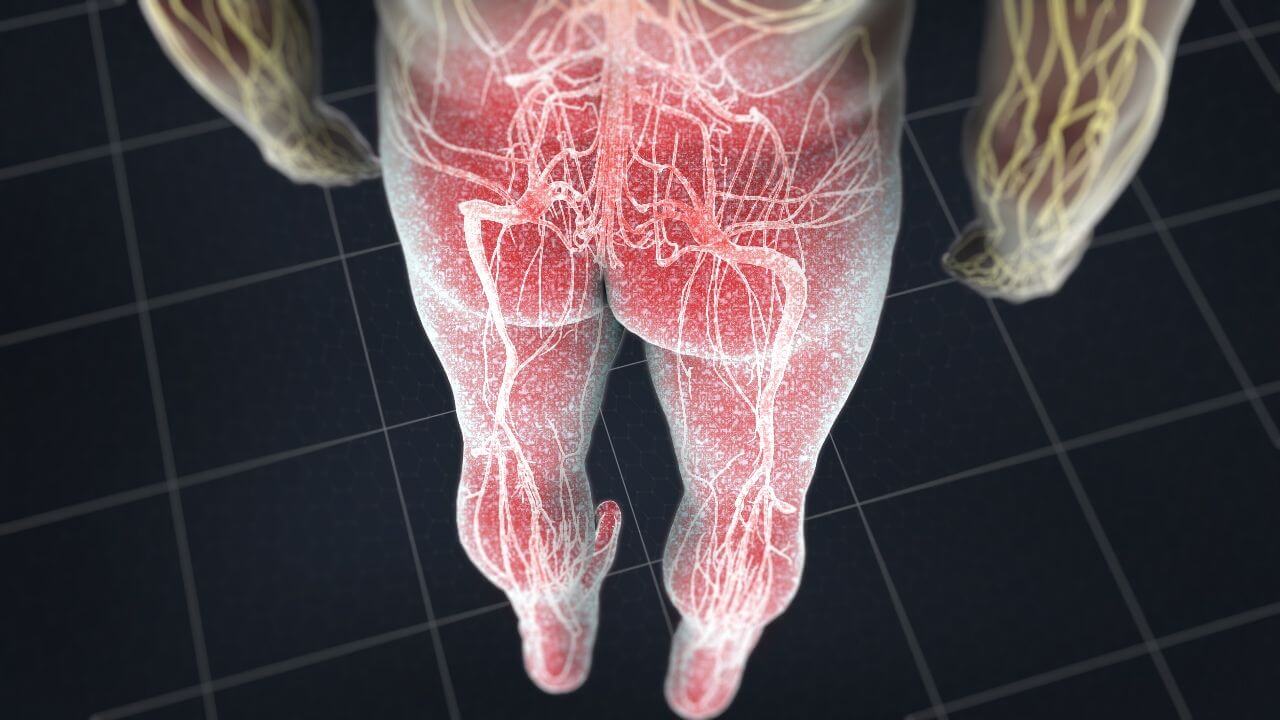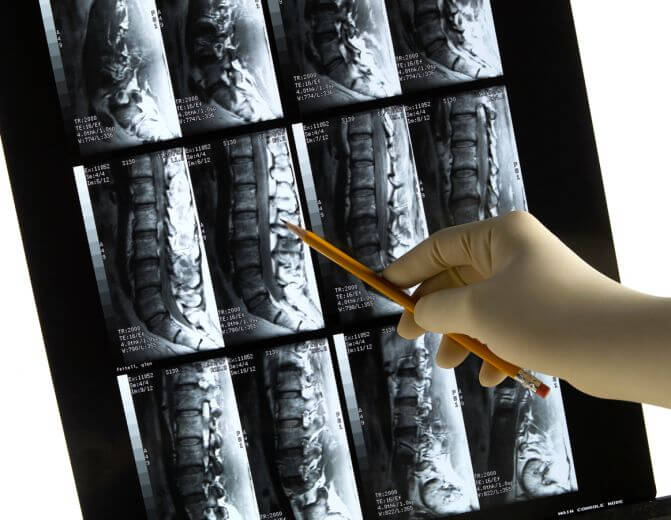Intervertebral discs can weaken over time, causing a lumbar disc to herniate or rupture. When this happens, it can press directly on the sciatic nerve, leading to nerve inflammation or irritation.
Sciatica is a common yet often misunderstood type of back pain that impacts as many as 40% of people sometime in their life, with occurrences becoming more frequent with age.
Sciatic pain and symptoms like leg numbness, tingling or weakness are caused by a pinched or compressed nerve root exiting the spinal cord in the spine’s lumbar region — resulting in the medical term lumbar radiculopathy.
If you struggle with sciatic pain in your back or radiating into your leg, call Desert Institute for Spine Care in Arizona. Our orthopedic doctors focus on providing the most advanced diagnosis and treatment options for lumbar radiculopathy.

Sciatica, also called lumbar radiculopathy, is a description of symptoms rather than an actual diagnosis. The term describes a form of sharp pain, tingling and sometimes numbness that originates from the sciatic nerve. Sciatic pain travels via the sciatic nerve down the low back, and can also be felt in the buttocks, back of the thigh, behind the knees, the calves and the soles of the feet and big toes.
The sciatic nerves are your body’s two largest nerves. Each is as thick as your little finger and runs down your back, through each of your legs and to your feet. Pain occurs when either the nerve root that forms the sciatic nerve or the nerve fibers themselves become irritated or pinched in the lower area of the back — the lumbar spine. This produces pain that can be felt anywhere along the nerve’s branch.
Those who struggle with acute or chronic back pain may be more prone to sciatica. Other risk factors include obesity, smoking or a sedentary lifestyle.
The most common culprits for sciatic nerve pain are a variety of lower back conditions:
Intervertebral discs can weaken over time, causing a lumbar disc to herniate or rupture. When this happens, it can press directly on the sciatic nerve, leading to nerve inflammation or irritation.
This condition narrows the opening through which the nerve roots exit the lower spine, injuring nerve fibers.
This disorder occurs when a vertebra slips forward onto the bone adjacent to it in the lower part of the back.
Also called osteoarthritis of the spine, this condition can occur in the lower back and impact the sciatic nerve.
Injuries sustained during a fall, car accident or playing a sport can lead to nerve compression, especially when spinal bones become fragmented or broken.
Getting help for sciatic pain starts with addressing the underlying problem that’s causing lumbar radiculopathy. At DISC, our first goal is to provide patients with an accurate diagnosis. This essential step ensures that all treatment to follow addresses your unique symptoms. Personalized Pain Diagnostics (PPD) is our proprietary diagnostic technique that allows us to find the source of the specific pain generator, whether it be sciatica or another spine condition.


For some people, sciatic pain resolves within a few hours or days. However, if your attacks continue for several weeks or even months, you should consult with a doctor. At DISC, our team of orthopedic surgeons strives to always provide the best treatment options for lumbar radiculopathy and sciatic pain to patients in Arizona. We always recommend conservative options first based on your sciatic pain and diagnosis. These may include:
We may recommend therapeutic injections, such as lumbar transforaminal steroid injections, to deal with inflammation and especially intense pain. If episodes become frequent or begin to interfere with your daily life, back surgery for sciatica pain relief may be your best option.
The surgeons at DISC are experts in minimally invasive laser spine treatment for lumbar radiculopathy as well as more complex, traditional spine surgeries. Our expert surgeons also treat sciatica with a least invasive spine procedure called an Endoscopic Discectomy. This procedure has many patient benefits that minimize their time away from work and their active lifestyle.
If you are experiencing sciatic nerve pain, the doctors at DISC offer a wide range of treatment options for lumbar radiculopathy at our clinics in the Phoenix, AZ area. Contact us today to schedule your appointment.
Our spine health blog features up-to-date spine education and expert spine tips from our spine specialists here at DISC.
1635 East Myrtle Avenue Suite 100, Phoenix, AZ 85020, USA
18700 North 64th Drive Suite 105, Glendale, AZ 85308, USA
8630 East Vía de Ventura Suite 210, Scottsdale, AZ 85258, USA
3487 South Mercy Road, Gilbert, AZ 85297, USA
1635 East Myrtle Avenue Suite 400, Phoenix, AZ 85020, USA